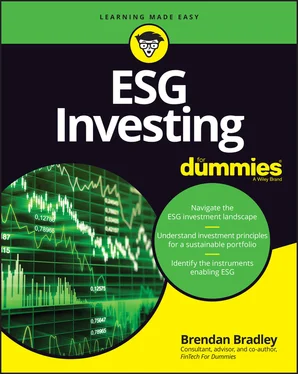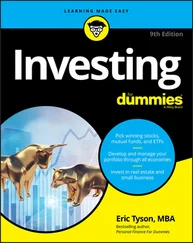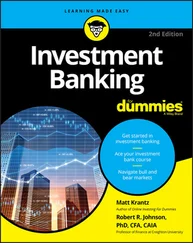Outlining a Company’s Use of Natural Resources
The environmental sector of ESG reflects on how a company considers its stewardship obligations in terms of protecting the natural environment. The ‘E’ in ESG considers the company’s use of natural resources and the effect its operations have on the environment, in terms of direct operations and throughout its supply chains. Therefore, a company’s environmental disclosures provide an insight into its efforts to reduce material risks and opportunities for stakeholders. Those companies that fail to anticipate the effects of their practices on the environment may face financial risk. Failing to act or protect against environmental “accidents” can lead to sanctions, prosecution, and reputational damage, which reduces shareholder value.
In the following sections, I describe the different environmental factors that companies need to consider when investing.
CO 2or GHG? Climate change and carbon emissions
The key environmental target that most nations have targeted is net-zero emissions by 2050, which indicates that all man-made greenhouse gas (GHG) emissions must be removed from the atmosphere through reduction measures that reduce the earth’s net climate balance. This should primarily be achieved through a rapid reduction in carbon emissions, but where zero carbon can’t be achieved, offsetting through carbon credits (a permit that allows the holder to emit a certain amount of CO 2or GHG) seems to be the preferred approach. However, the risk of relying on carbon credit offsets rather than rapid decarbonization is that companies can maintain emissions at a steady level, using carbon credits to reach net zero, which negates the need to actually reduce their own emissions.
To meet the internationally agreed-upon target of confining the rise in global average temperatures to well below 2 degrees Celsius above pre-industrial levels, science suggests that most fossil fuel reserves need to remain in the ground. The emergence of carbon pricing and decreasing technology costs implies that low-carbon energy sources will be more attractive and the demand for fossil fuels will fade, leading to the demise of the companies that explore, mine, and burn them. Moreover, any fall in oil prices decreases the incentive for producers to drill for many fossil fuel assets. This has led to an even steeper fall in the price of carbon credits, or Certified Emission Reduction (CER) units.
These developments have led to the divestment of many fossil fuel stocks by asset managers, from both a sustainability and investment performance perspective, and have prompted further analysis of the relative carbon footprint of individual stocks and a call for pension funds to disclose their aggregate carbon footprint. However, some ESG investors argue that simply selling a stock to investors who don’t care about climate change will have zero impact on the overall climate program. A more positive approach would be to encourage engagement with management of fossil fuel companies to encourage a shift away from current production approaches and move more toward the development of a renewable energy infrastructure. In addition, divesting particular energy and utility stocks may create divergence away from benchmark investment performance.
 These approaches require an assessment of a company’s carbon (greenhouse gas or GHG emissions) strategy, exposure, and long-term approach to decarbonizing their business. A range of low-carbon benchmarks have been developed to help investors track their investments in relation to their carbon exposure or potential risk. Asset owners are increasingly concerned that hydrocarbon-based assets will become “stranded” over time due to climate change concerns. (In this context, stranded refers to assets that turn out to be worthless due to the transition to a low-carbon economy.) The stranded assets concept was pioneered by the UK-based non-governmental organization (NGO) Carbon Tracker (CT), which provides research and analysis on this issue (
These approaches require an assessment of a company’s carbon (greenhouse gas or GHG emissions) strategy, exposure, and long-term approach to decarbonizing their business. A range of low-carbon benchmarks have been developed to help investors track their investments in relation to their carbon exposure or potential risk. Asset owners are increasingly concerned that hydrocarbon-based assets will become “stranded” over time due to climate change concerns. (In this context, stranded refers to assets that turn out to be worthless due to the transition to a low-carbon economy.) The stranded assets concept was pioneered by the UK-based non-governmental organization (NGO) Carbon Tracker (CT), which provides research and analysis on this issue ( https://carbontracker.org/terms/stranded-assets/ ). The CT approach focuses on the valuation of companies, which includes projections of the future value of their coal, oil, and gas inventories. The stranded asset concept is worrying asset owners as they question what happens to assets that are worth less than their projected value due to changes linked to energy transition that spans the typical lifetime of pension scheme assets, which can be 40-plus years. Therefore, investors need to be fully aware of initiatives that require companies to report on the repercussions of the future value of their assets on their business model, and what impact that may have on the value of their investments.
 Moreover, financial regulators have recognized the significance of scenario analysis for measuring climate risk through the inclusion of scenario analysis in the Financial Stability Board’s Task Force on Climate-related Financial Disclosures (TCFD) recommendations. Visit
Moreover, financial regulators have recognized the significance of scenario analysis for measuring climate risk through the inclusion of scenario analysis in the Financial Stability Board’s Task Force on Climate-related Financial Disclosures (TCFD) recommendations. Visit www.tcfdhub.org/scenario-analysis/ for more information on how the TCFD has developed a framework to help companies and other organizations more effectively disclose climate-related risks and how scenario analysis is used to explore alternatives that may significantly alter the basis for “business as usual” assumptions.
Clean and green: Energy efficiency
Energy efficiency is most often associated with clean technology companies where green energy businesses are looking to decrease hydrocarbon-sourced energy consumption by displacing it with clean energy sources, or to integrate systems to improve energy usage. Because of the numerous alternatives to working toward and investing in energy efficiency, it’s challenging to classify and define companies based on fields or themes, as some of the world’s historic hydrocarbon energy companies are investing heavily in transitioning away from coal, oil, and gas.
 The definitions of how firms are categorized and compared by industry and sector by established data/index providers such as Morgan Stanley Capital International (MSCI) or Financial Times Stock Exchange (FTSE) Russell can be useful for investors. Visit
The definitions of how firms are categorized and compared by industry and sector by established data/index providers such as Morgan Stanley Capital International (MSCI) or Financial Times Stock Exchange (FTSE) Russell can be useful for investors. Visit www.msci.com/gics and www.ftserussell.com/data/industry-classification-benchmark-icb .
The International Energy Agency (IEA; visit www.iea.org/ ) is the global authority for energy efficiency data, analysis, and policy advice. They help governments realize the huge potential of energy efficiency, guiding them on growing, implementing, and quantifying the impacts of policies to alleviate climate change, improve energy security, and develop economies while delivering environmental and social benefits. They track global policy progress in over 200 countries, regions, and states, and global investment in energy efficiency as published in the World Energy Investment report. As of 2016, energy efficiency investment represented 13.6 percent of the US$1.7 trillion invested across the entire energy market.
Such investments are directed into different fields, with approximately 58 percent focused on buildings, 26 percent allocated to transport, and 16 percent assigned to industry. The types of services or infrastructure projects benefitting from alternative fuels and renewable energy include generation, transmission, and distribution of electricity from renewable sources such as wind, solar, geothermal, biomass, wave, and tidal (more information on these investment themes is found in Chapter 10).
Читать дальше

 These approaches require an assessment of a company’s carbon (greenhouse gas or GHG emissions) strategy, exposure, and long-term approach to decarbonizing their business. A range of low-carbon benchmarks have been developed to help investors track their investments in relation to their carbon exposure or potential risk. Asset owners are increasingly concerned that hydrocarbon-based assets will become “stranded” over time due to climate change concerns. (In this context, stranded refers to assets that turn out to be worthless due to the transition to a low-carbon economy.) The stranded assets concept was pioneered by the UK-based non-governmental organization (NGO) Carbon Tracker (CT), which provides research and analysis on this issue (
These approaches require an assessment of a company’s carbon (greenhouse gas or GHG emissions) strategy, exposure, and long-term approach to decarbonizing their business. A range of low-carbon benchmarks have been developed to help investors track their investments in relation to their carbon exposure or potential risk. Asset owners are increasingly concerned that hydrocarbon-based assets will become “stranded” over time due to climate change concerns. (In this context, stranded refers to assets that turn out to be worthless due to the transition to a low-carbon economy.) The stranded assets concept was pioneered by the UK-based non-governmental organization (NGO) Carbon Tracker (CT), which provides research and analysis on this issue (  Moreover, financial regulators have recognized the significance of scenario analysis for measuring climate risk through the inclusion of scenario analysis in the Financial Stability Board’s Task Force on Climate-related Financial Disclosures (TCFD) recommendations. Visit
Moreover, financial regulators have recognized the significance of scenario analysis for measuring climate risk through the inclusion of scenario analysis in the Financial Stability Board’s Task Force on Climate-related Financial Disclosures (TCFD) recommendations. Visit 










